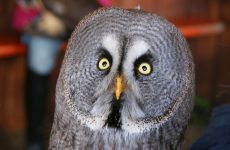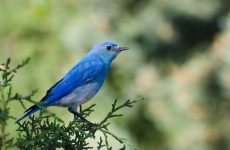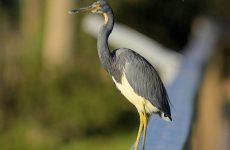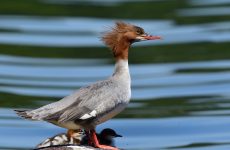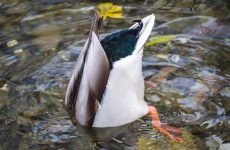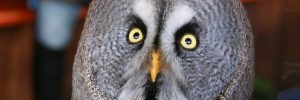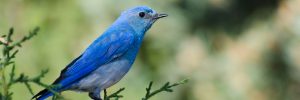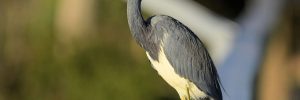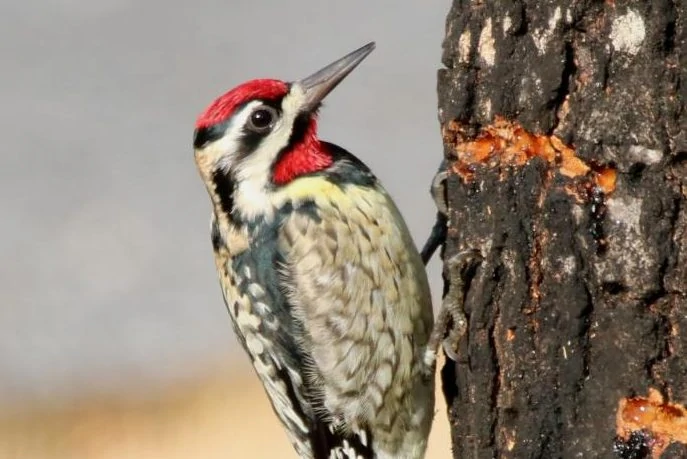
Sapsuckers desire sweet tree sap and will make rows of holes in trees looking for this delicious food, targeting different trees at different times of the year.
They are members of the woodpecker Picidae family and are all in the Sphyrapicus Genus.
Introduction
There are four species of sapsucker in the world, and all of them are found in North America and Mexico.
The four species of sapsuckers are Yellow-bellied Sapsuckers, Williamson’s Sapsuckers, Red-breasted Sapsuckers, and Red-naped Sapsuckers.
Where Sapsuckers Live
In eastern US states and across much of Canada are Yellow-bellied Sapsuckers, and they also have the widest range. In western US states are the other three sapsuckers.
On the Pacific Coast are Red-breasted Sapsuckers, but inland western states, and Canada Red-naped Sapsuckers and Williamson’s Sapsuckers can be found.
All sapsuckers migrate, except those on a narrow strip along the Pacific Coast.
Sapsucker Identification
Sapsuckers are quite similar looking with predominantly black-and-white markings and various amounts of red on their heads. There are also some hybrids where regions overlap.
Yellow-bellied Sapsuckers and Williamson’s Sapsuckers also have a yellow tinge to their bellies. Male and female sapsuckers also look a little different, except Red-headed Sapsuckers.
Read the full ID guide for each woodpecker later in this article.
Differences Between Sapsuckers and Woodpeckers
Sapsuckers are in fact a type of woodpecker that also have some distinct differences that set them apart from the rest of the woodpecker family. They look very similar to woodpeckers, but there are some differences.
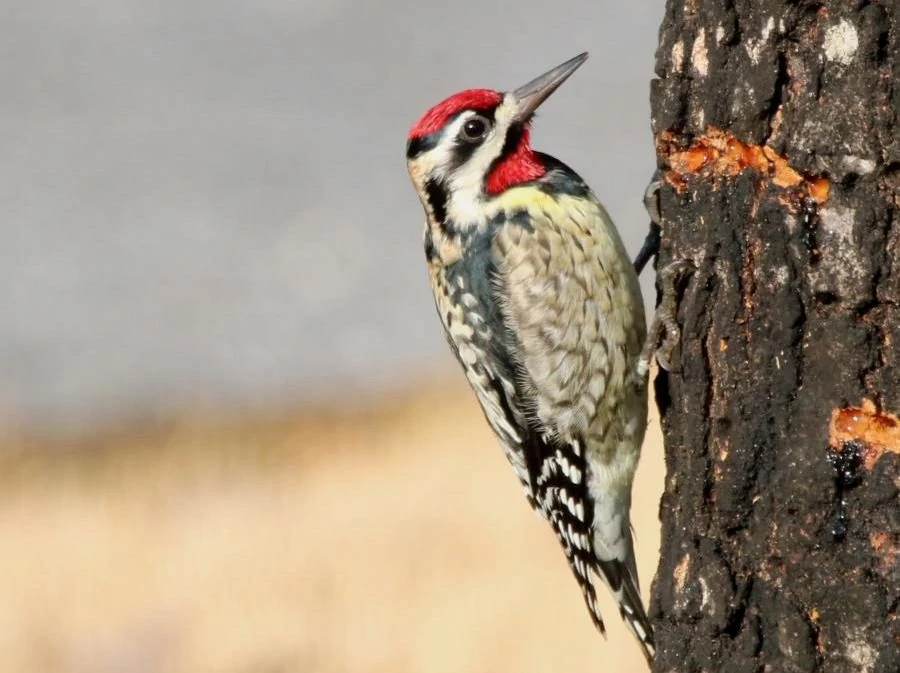
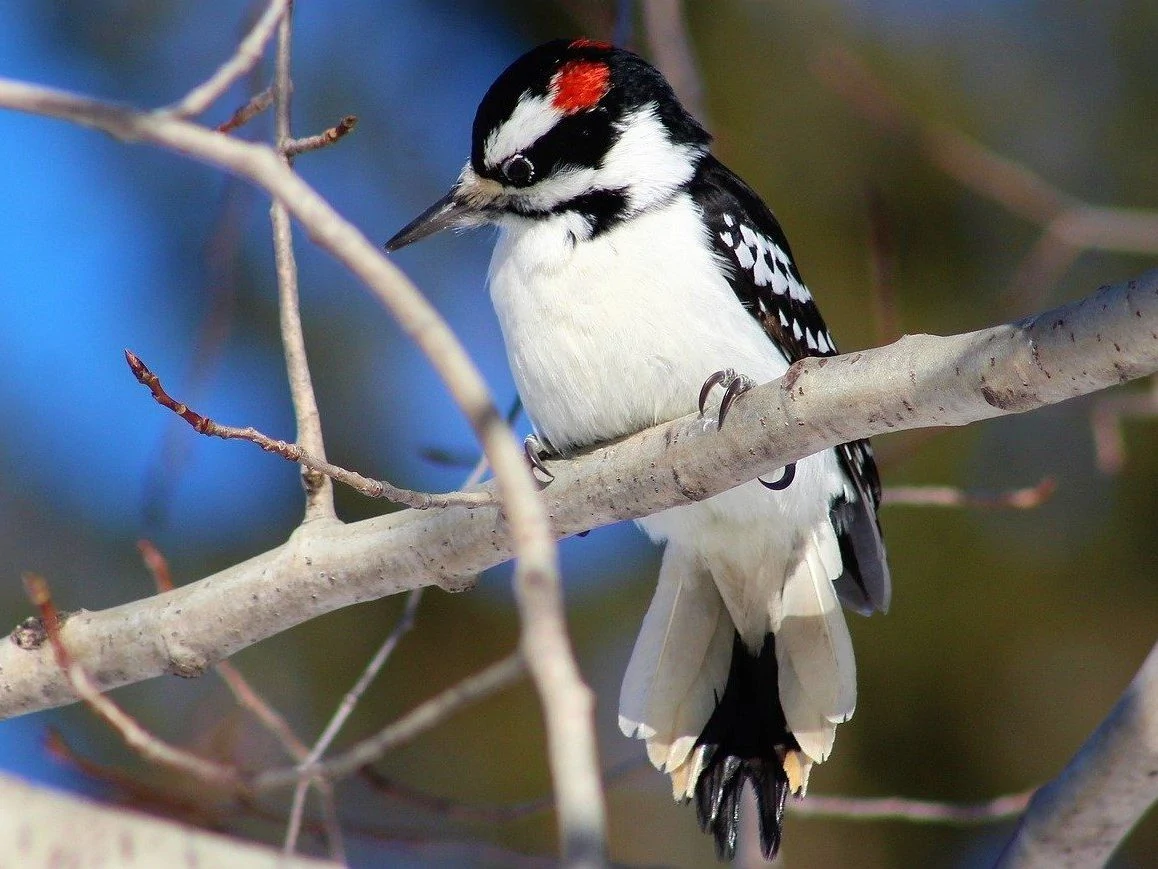
Differences between sapsuckers and woodpeckers:
- Sapsuckers feed on sap from trees but woodpeckers mostly eat insects and larvae
- Sapsucker holes are in horizontal and vertical lines, to best harvest the sap but woodpecker holes are more randomly spaced, as they are looking for larvae
- Sapsuckers have brush tipped tounges to help harvest the sap, but woodpeckers have either smooth tongues for ants or barbed tongues for larger prey.
- Sapsuckers prefer maple and birch trees, but woodpeckers do not mind which tree they just go for the larvae.
- Sapsucks are the only birds in the genus Sphyrapicus. Other woodpeckers are in different genus.
Sapsucker Diet
Sapsuckers feed on the sap from trees which they get by boring a hole in the tree and waiting for a pool of sap to collect when they return. They lick the sap rather than suck it using their long tongues, which have small brushes on the end, to lick the sap. They also eat fruit and they eat insects and feed mainly insects to their young.
Sapsuckers eat the sap from trees and feed on the cambium layer beneath the bark, which is the growing part of the truck.
What Trees Sapsuckers Like
The most common trees targeted by sapsuckers are Paper Birch, Red maple, Eastern Hemlock, Juneberry, and bigtooth aspen. They will also feed on Red Spruce, Gray Birch, and Quaking Aspen but not as often.
Sapsuckers will visit the same trees daily and tend to feed on hemlock, spruce and aspen in spring and then red maple followed by birch over the summer. They will also feed on apple trees, especially during migration.
Trees that already have sapsuckers holes are often preferred or trees with some damage.
Sapsuckers Tree Damage
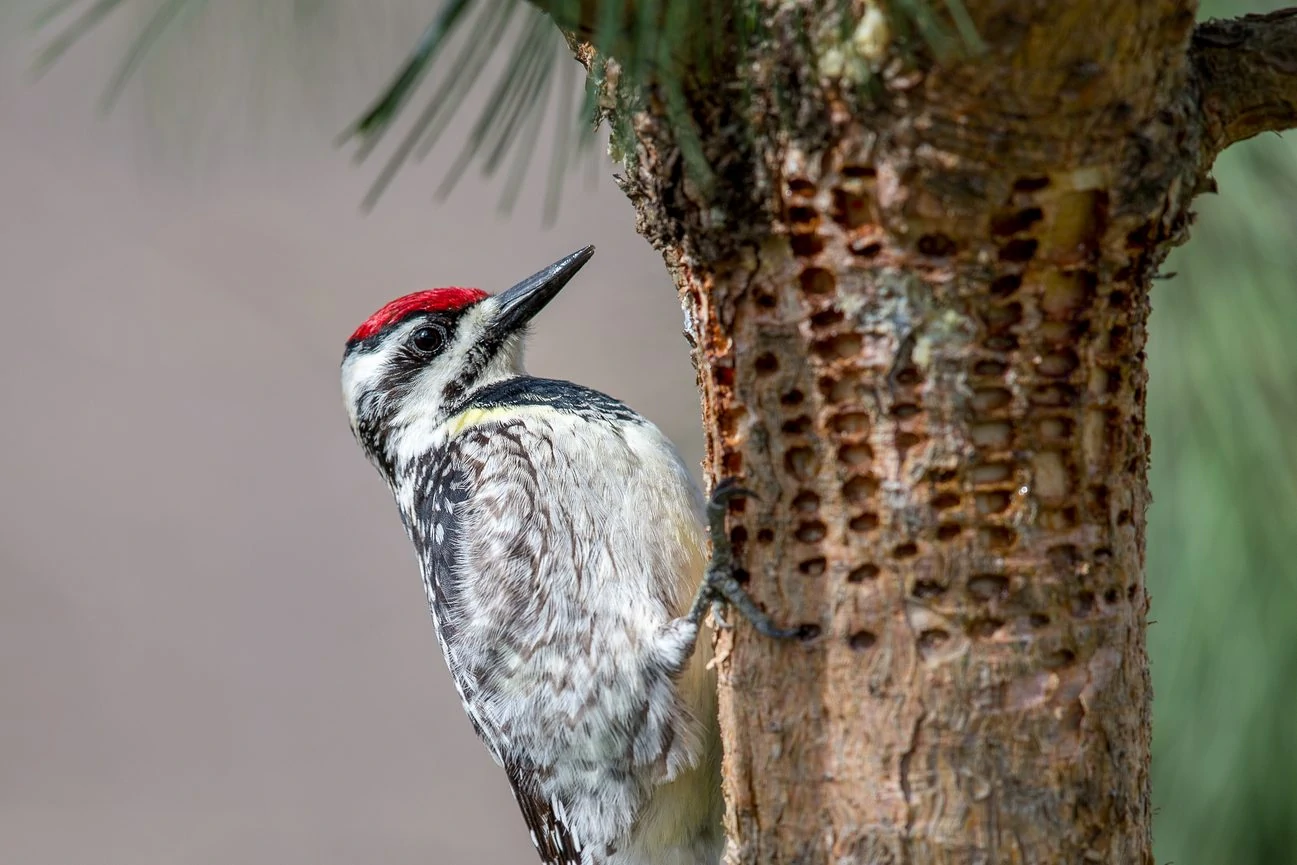
Trees damaged by sapsuckers often die, and a study has shown that up to 67% of Gray Birch trees die, 51% of Paper Birch trees, and 40% of Red Maple trees. Hemlock and Red Spruce are not as affected by sapsuckers.
Sapsuckers could kill a tree within a year, but usually, two or more years are needed to cause enough damage.
What Sapsucker Holes In Trees Look Like
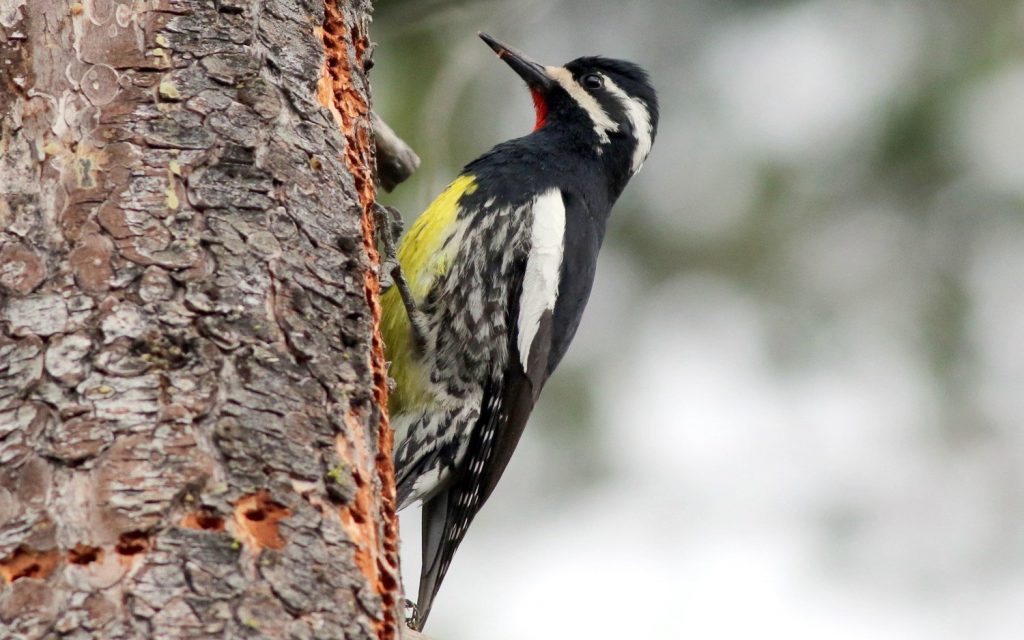
Holes are often in clusters near to live branches and enlarged for around 3 days before a new hole is made, often above the old hole. Holes may also be horizontal and form a ring around the tree, as this helps to create a pool of sap above the ring.
4 Species of Sapsucker
1. Yellow-bellied Sapsucker
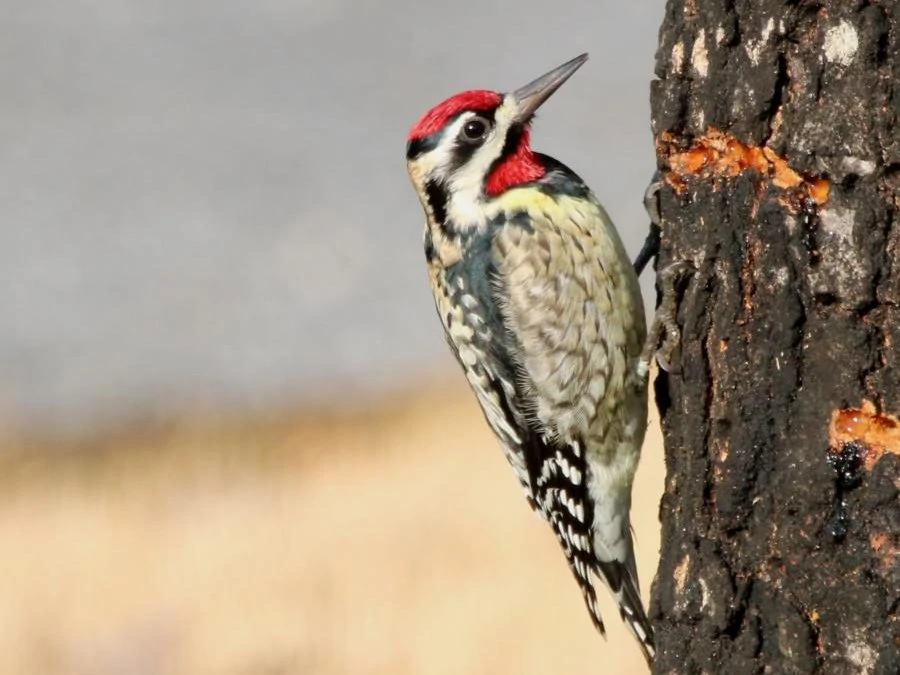
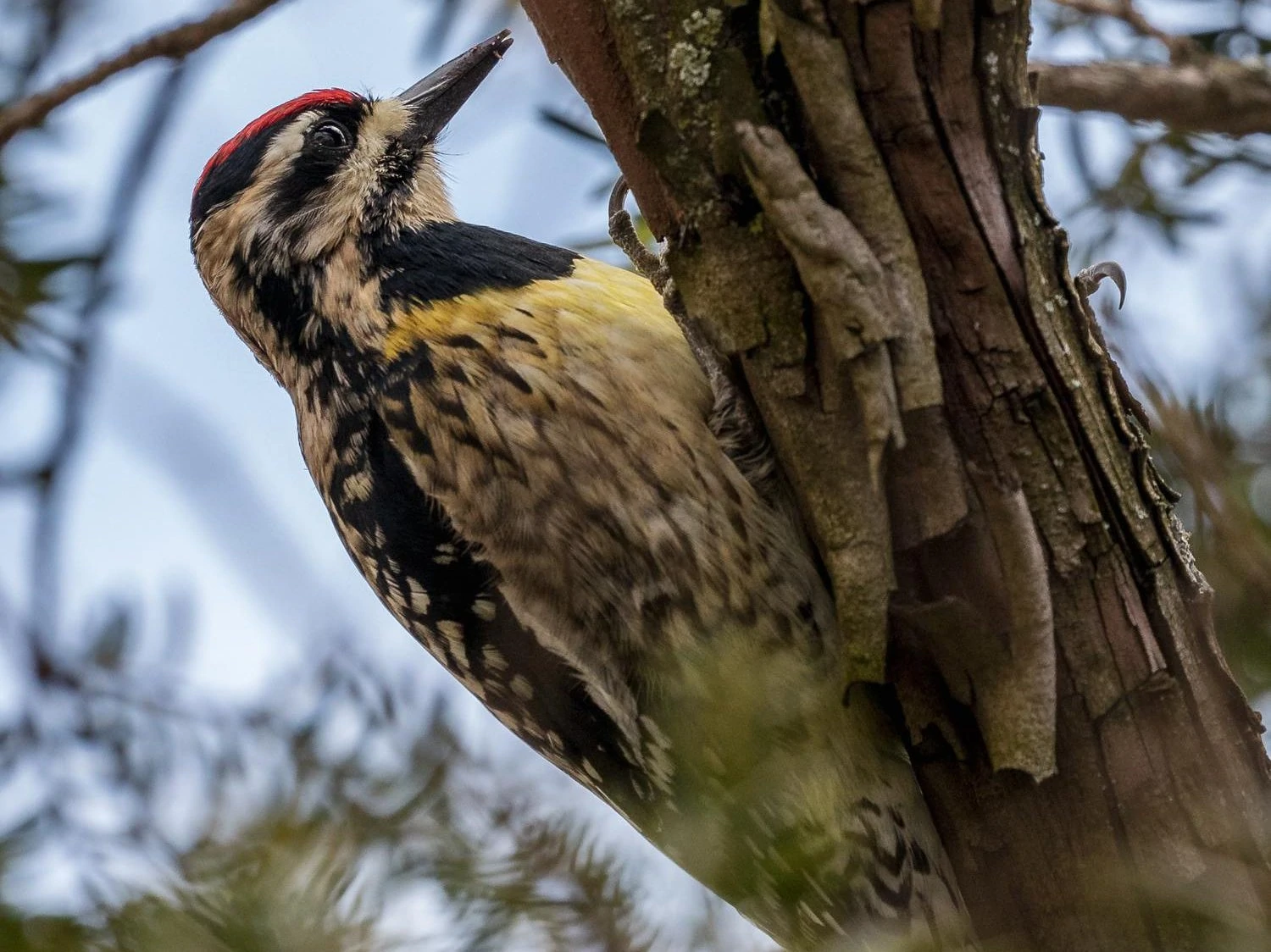
Yellow-bellied Sapsuckers are relatively small and are about the size of a robin. They are mostly black with red foreheads, and the male has a red throat.
The difference between male and female Yellow-bellied Sapsuckers is the male has a red throat, but the females’ are white.
- Sphyrapicus varius
- Length: 7.1-8.7 in (18-22 cm)
- Weight: 1.5-1.9 oz (43-55 g)
- Wingspan: 13.4-15.8 in (34-40 cm)
Yellow-bellied Sapsuckers spend the summer breeding in Canada and Northeastern US states and then migrate for the winter to southern US states and Mexico.
Yellow-bellied Sapsuckers make holes in trees and use their brush-tipped tongues to get the sap out. They make neat rows of holes in horizontal rows, so look out for these in young paper birch, yellow birch, red or sugar maple, and hickory trees.
The holes need to be maintained to ensure a flow of sap. They make a loud mewing call, and they nest in tree cavities and usually have 5-6 white eggs.
Where to spot Yellow-bellied Sapsuckers:
Young deciduous forests often on birch or maple trees where they make neat rows of sapwells to feed.
How to attract more Yellow-bellied Sapsuckers to your backyard:
Although not usually found at bird feeders, Yellow-bellied Sapsuckers sometimes will come for suet.
2. Red-breasted Sapsucker
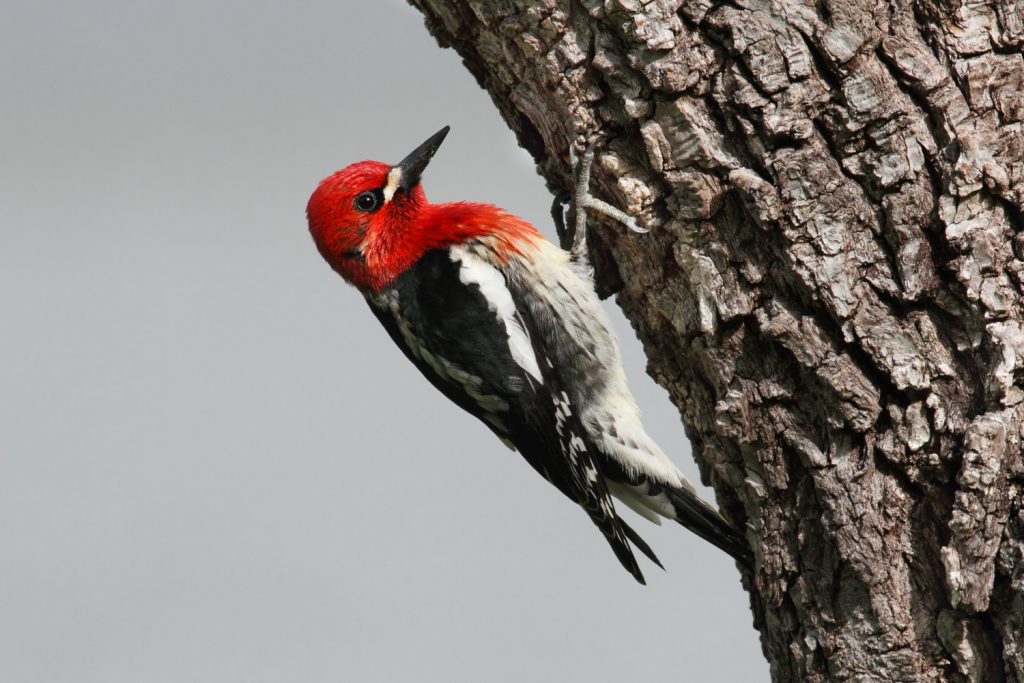
Red-breasted Sapsuckers are medium-sized woodpeckers with dark red heads and breasts. They have a white line down the wing when folded and a white spot in front of their eye. Males and females look the same, but juveniles are darker and without the bright red head. Red-breasted Sapsuckers are redder on the head in northern areas than those in California.
- Sphyrapicus ruber
- Length: 7.9-8.7 in (20-22 cm)
- Weight: 1.9-2.2 oz (53.1-63.5 g)
- Wingspan: 14.6-16.0 in (37-40.6 cm)
Red-breasted Sapsuckers can be found along the Pacific Coast from British Columbia down to Mexico.
Red-breasted Sapsuckers migrate towards the coast from inland breeding areas in British Columbia and California, but they remain all year along the whole Pacific Coast from British Columbia to Baja Califonia.
They feed on sap from trees but also insects and fruit.
Where to find Red-breasted Sapsuckers:
Red-breasted Sapsuckers can be found in conifer forests, so look out for rows of shallow holes in the bark of trees.
How to attract Red-breasted Sapsuckers to your yard:
Sapsuckers do not as often come to backyards unless you have lots of conifer trees, but they may be tempted with cut fruit.
3. Red-naped Sapsucker
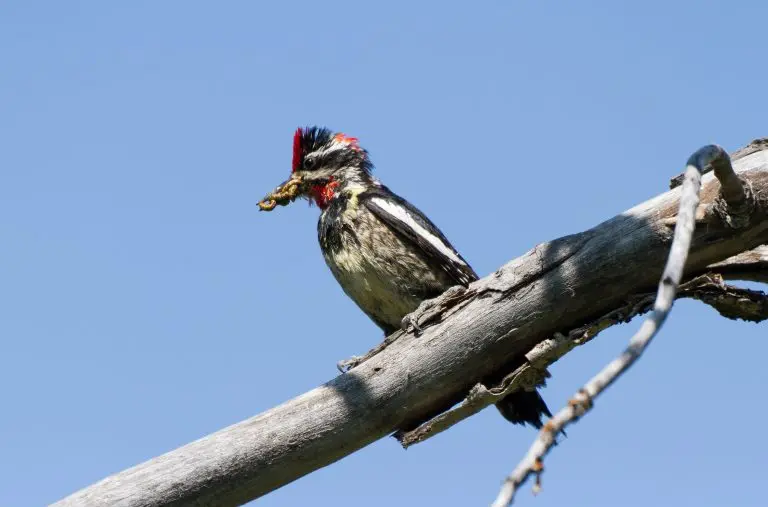
Red-naped Sapsuckers are medium-sized woodpeckers that look very similar to other woodpeckers and sapsuckers. A long white bar on the wings helps to distinguish them from the Hairy and Downy woodpeckers.
They are black and white with a red cap, nape, and throat and a black stripe through the eye with mottled bellies. Females are similar except for a white patch on the chin.
- Sphyrapicus nuchalis
- Length: 7.5-8.3 in (19-21 cm)
- Weight: 1.1-2.3 oz (32-66 g)
- Wingspan: 16.1-16.9 in (41-43 cm)
Red-naped Sapsuckers are migratory and breed in mountain forests in western US states before migrating to southern Arizona, New Mexico, California, and Northern Mexico.
They feed on sap by drilling parallel lines of holes and using their tongues to lap the sap rather than suck the sap. They also eat ants, spiders, beetles, and flies.
Like most woodpeckers, they build cavity nests in trees with heartwood fungus, making them softer, and they may reuse the nest in future years and lay 3 – 7 eggs.
How to attract more Red-naped Sapsuckers to your backyard:
Red-naped Woodpeckers will visit backyards, especially if you have aspen, birch, or pine trees, and they visit suet feeders, and they are more active in the morning.
4. Williamson’s Sapsucker
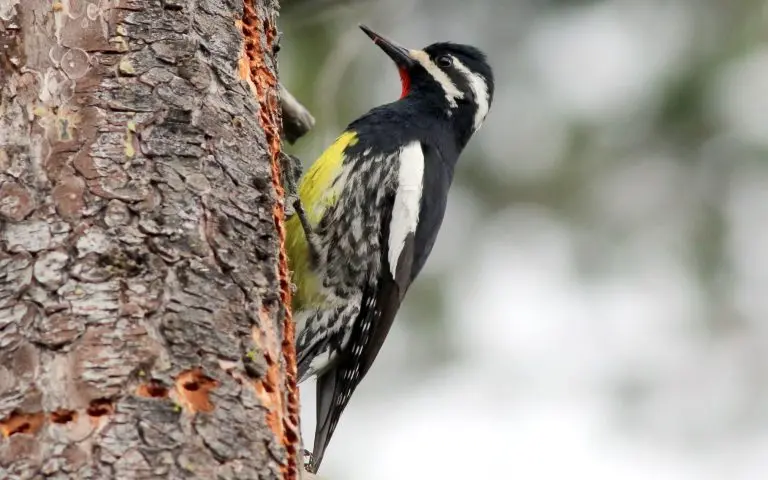
Williamson’s Sapsuckers males are more black than many woodpeckers with a glossy black back, vertical wing patches, red throat, and yellow belly.
Females look quite different and have a black and white barred pattern on their back, and they have a brown head and black breast patch.
- Sphyrapicus thyroideus
- Length: 8.3-9.8 in (21-25 cm)
- Weight: 1.6-1.9 oz (44-55 g)
Williamson’s Sapsuckers are migratory and spend the summer breeding in the mountainous west and the winter in southern states and Mexico.
Mainly feeding on sap from conifer trees, especially in spring, and then more insects such as ants, beetles, and flies in summer. Winter food is often fruit and seeds.
How Frequently Sapsuckers are Spotted in Summer and Winter
Checklists are a great resource to find out which birds are commonly spotted. These lists show which sapsuckers are most frequently recorded on checklists on ebird in summer and winter.
Sapsuckers in Summer:
Yellow-bellied Sapsucker 2.2%
Red-breasted Sapsucker 0.7%
Red-naped Sapsucker 0.4%
Williamson’s Sapsucker 0.2%
Sapsuckers in Winter:
Yellow-bellied Sapsucker 4.3%
Red-breasted Sapsucker 0.6%
Red-naped Sapsucker 0.3%
Williamson’s Sapsucker 0.05%

